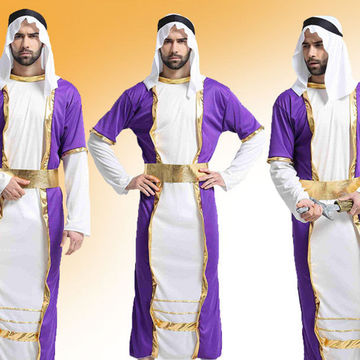Exploring the Rich Heritage of Eastern Wear Pakistan in Modern Fashion
Wiki Article
Introducing the Rich Heritage of Eastern Fashion
Discovering the complex tapestry of Eastern fashion reveals a world where custom fulfills technology, and craftsmanship links with cultural importance. From the extravagant silks of old dynasties to the complex embroidery of nomadic tribes, each garment narrates that goes beyond time and borders, resembling the abundant heritage and artistic heritage of the East. As we peel back the layers of history and practice, an interesting trip awaits, unraveling the tricks behind the exciting allure and enduring impact of Eastern style on the global stage.Beginning of Eastern Fashion

In Mesopotamia, for instance, the Sumerians and Babylonians created garments making use of wool, linen, and natural leather, adorned with detailed patterns and jewelry. Ancient Egyptians are renowned for their innovative weaving skills and using light-weight, breathable fabrics like linen. Chinese fashion emphasized the relevance of color importance and elaborate embroidery methods, while Indian clothing featured vibrant colors, glamorous textiles like silk and cotton, and intricate drapery styles such as the saree.
These ancient human beings not only influenced each other yet additionally led the way for the varied and culturally abundant tapestry that is modern Eastern style. Via centuries of evolution, Eastern fashion continues to prosper, mixing practice with modern-day impacts to develop timeless and distinct styles.
Social Impacts and Customs
Drawing from centuries-old customizeds and beliefs, cultural impacts and customs play a crucial duty fit the significance of Eastern style (eastern wear pakistan). The rich tapestry of cultures throughout Eastern regions such as Asia, the Middle East, and Africa has greatly influenced the clothes styles, shades, materials, and develops that are prevalent in Eastern style todayIn nations like India, Japan, and China, conventional garments like sarees, robes, and cheongsams proceed to hold considerable social importance and are often decorated with elaborate needlework or symbolic patterns that show deep-rooted ideas and values. In Middle Eastern nations, the flowing kaftans and abayas worn by males and women not just serve as small clothes yet likewise mirror the region's social heritage and Islamic traditions.
In addition, the use of details colors like red permanently luck in Chinese society or intricate geometric patterns influenced by Islamic architecture even more exhibit how social impacts manifest in Eastern style - eastern wear pakistan. By honoring and preserving these social impacts and traditions, Eastern fashion proceeds to advance while staying true to its abundant heritage
Evolution of Eastern Attire
With time, Eastern garments have undergone considerable changes, mirroring a blend of custom and modernity in their layout and design. Standard Eastern garments such as the saree, bathrobe, hanbok, and salwar kameez have progressed to incorporate contemporary elements while preserving their social significance.One notable advancement is using cutting-edge materials and methods in Eastern garment construction. Conventional handwoven textiles like silk and cotton have been enhanced with modern-day products such as polyester and blends, providing boosted resilience and simplicity of care. Additionally, improvements in printing modern technologies have allowed complex patterns and styles to be integrated right into Eastern garments with precision and detail.
Furthermore, changes in silhouette and customizing have modernized Eastern attire, making them more versatile and suitable for varied events. Standard gown codes websites have kicked back, enabling experimentation with embellishments, styles, and shades. This development has not only made Eastern garments much more easily accessible and attractive to an international audience but has additionally ensured their continued importance in contemporary style landscapes.
Significance in Eastern Attire
Discovering the deep-rooted social value woven into Eastern clothing introduces an abundant tapestry of significance and practice. Eastern garments are often imbued with signs that reflect the user's social status, faiths, and social identity. In numerous Eastern societies, the color red represents luck and prosperity, making it a preferred choice for check out this site wedding event attire. Likewise, intricate needlework patterns can convey tales of mythology or represent blessings for the user.Additionally, details garments hold symbolic meanings. The kimono in Japan, as an example, represents regard, practice, and rule. Its design, fabric, and even the method it is used all bring deep cultural importance. Likewise, the saree in India stands for elegance, sophistication, and the abundant heritage of the nation. The draping style of the saree varies throughout areas and celebrations, each lugging its very own symbolic relevance.

Influence of Eastern Style Today

The unification of Eastern elements in Western fashion has actually caused a combination of styles that satisfy varied preferences and preferences (eastern wear pakistan). Designers often draw inspiration from Eastern silhouettes, fabrics, and patterns, developing cutting-edge and one-of-a-kind items that blend typical and modern-day visual appeals. This cross-cultural exchange has not only renewed the garment industry however also fostered a much deeper admiration for Eastern heritage and workmanship
Furthermore, the rise of social media sites and digital systems has actually better magnified the effect of Eastern fashion, permitting brand names and designers to get to a broader audience and display their cultural heritage to the globe. With partnerships, style programs, and online projects, Eastern fashion continues to advance and prosper in today's interconnected and vibrant global landscape.
Final Thought
In final thought, the abundant heritage of Eastern fashion is a testament to the social influences, intricate workmanship, and profound importance embedded in each garment. From ancient people to modern-day analyses, Eastern style continues to captivate with its distinct mix of practice and development. The effect of Eastern style today works as a pointer of the ageless style and creative expression that have actually made it a global sensation commemorated for its rich social heritage.Exploring the complex tapestry of Eastern fashion reveals a globe where practice satisfies technology, and craftsmanship intertwines with social symbolism.The withstanding importance and cultural importance installed in Eastern attire continue to form and influence the contemporary effect of Eastern style today. Eastern style has actually transcended borders, ending up being an international phenomenon embraced by designers, stars, and style enthusiasts worldwide.In verdict, the rich heritage of Eastern style is a testament to the cultural influences, complex workmanship, and profound importance installed in each garment. The influence of Eastern fashion today serves as a pointer of the timeless sophistication site link and creative expression that have actually made it an international sensation commemorated for its abundant social heritage.
Report this wiki page